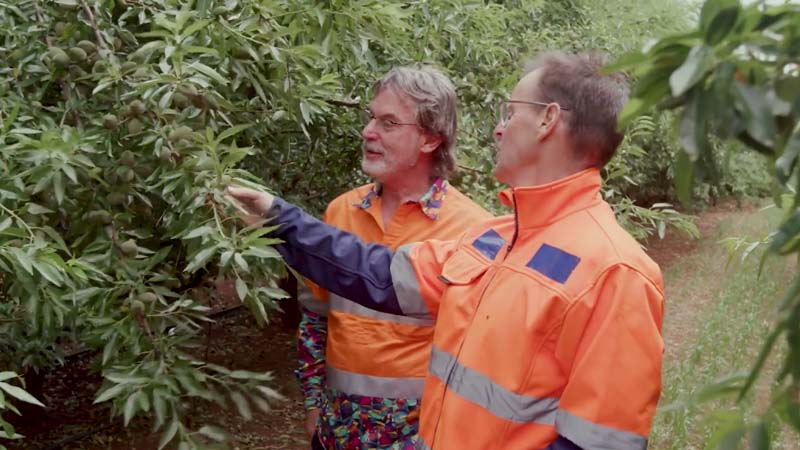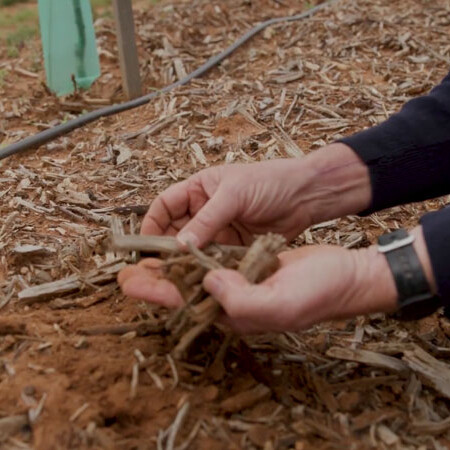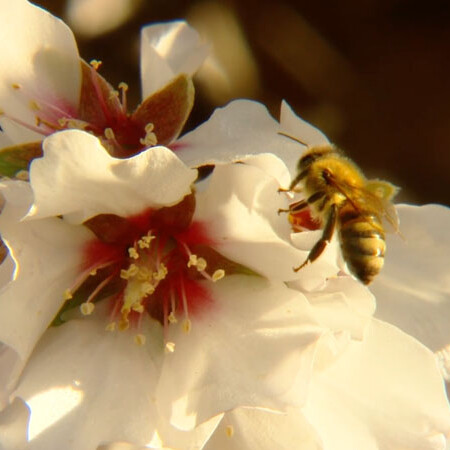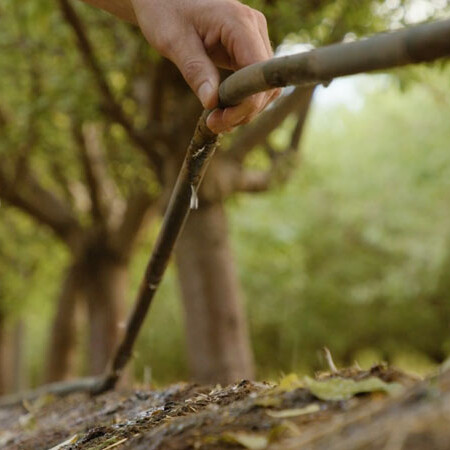Sustainable almonds
A better future for almonds
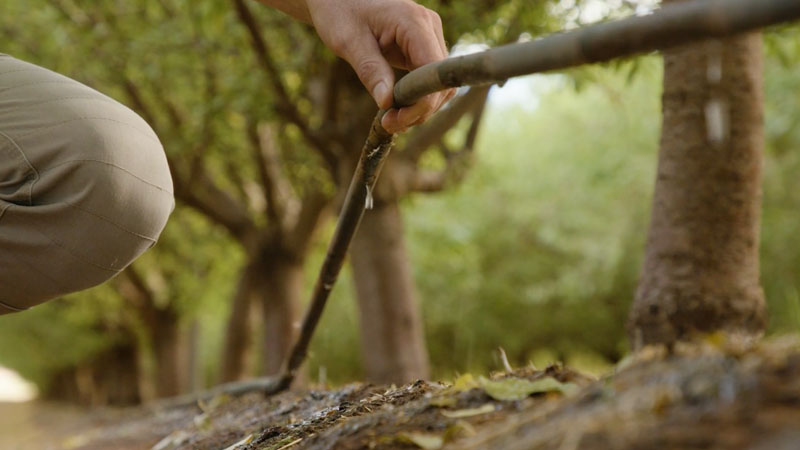
Increasing irrigation efficiency
Bees and Pollination
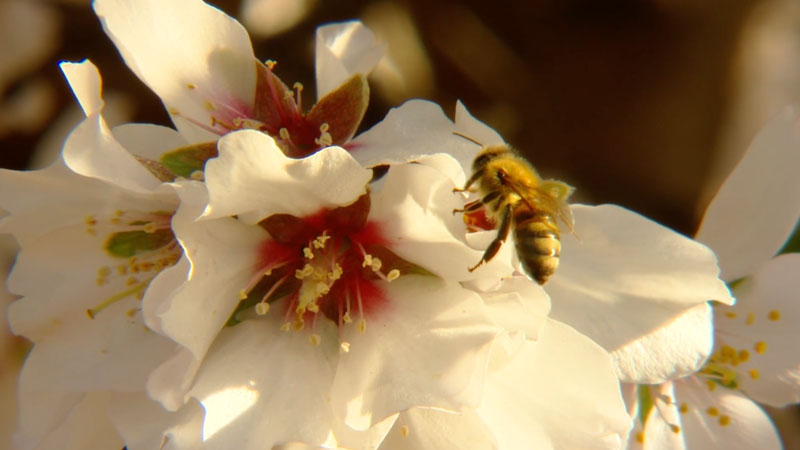
Bee Friendly Farming
In 2022 the Almond Board of Australia started a partnership with Bee Friendly Farming Australia, to promote their bee-friendly certification program that works with land managers to help protect, preserve and promote pollinator health including both honeybees and native bees. Orchestrated by the Wheen Bee Foundation, Bee Friendly Farming helps ensure the future of both pollinators and sustainable agriculture.
Reducing our Impact
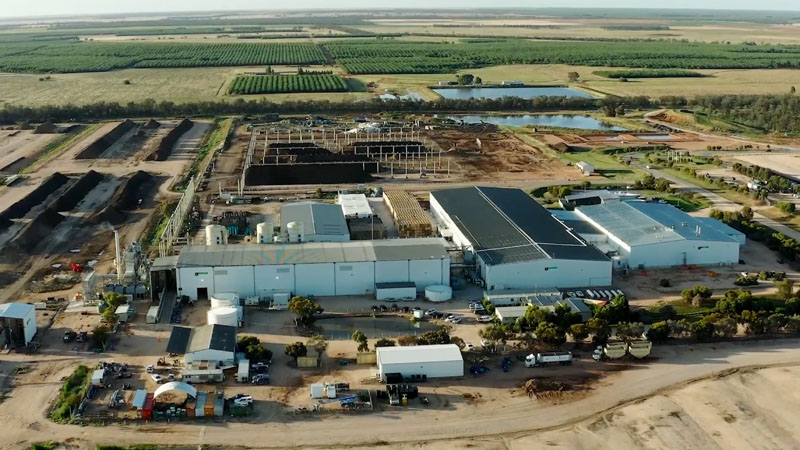
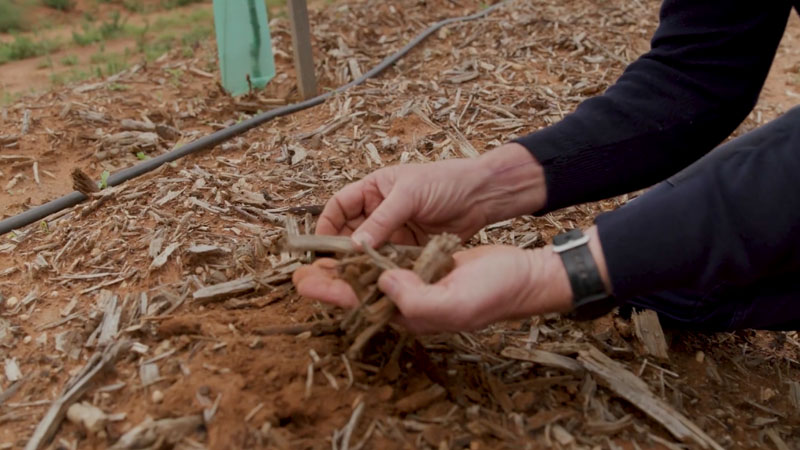
Whole Orchard Recycling
Whole Orchard Recycling (WOR) is a process where Almond trees at the end of their lifecycle are mulched and returned to the orchard floor. Research conducted in California almond orchards has identified significant advantages of WOR, including increased soil matter and increased water holding capacity.
Closing the Loop
When it comes to waste almonds have natural advantage due to their long shelf life. However, reducing farm, processor and food waste remains a priority for the Australian almond industry.
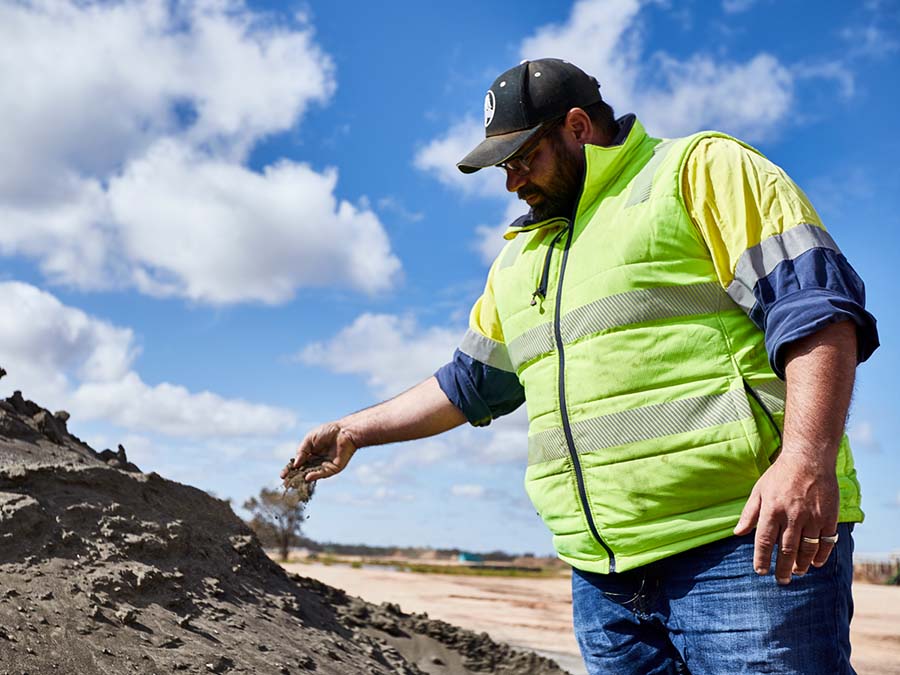
Our people

